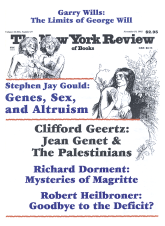The economic power of the New Asia attacks the international market on all fronts, from the manufacture of radios to the prostitution of children for export. The growth performance of these two commodities is equally spectacular. A significant distinction between them is that every economist pays close attention to the Asia that sells radios and that only Ron O’Grady studies the Asia that sells children for abuse, use, and throwing away.
O’Grady is coordinator of the International Campaign to End Child Prostitution in Asiatic Tourism. He has chosen to lodge his headquarters in Bangkok, because Thailand is the supermarket for purchasers of small and disposable bodies. He came to Manhattan’s Interchurch Center recently to report on developments in this branch of commerce before a group small enough to make plain how few of us bother about matters that ought to alarm us all.
Tourism is central to Thailand’s developmental efforts; and the attractions of its ancient culture compare but meagerly to the compelling pull its brothels exercise upon foreign visitors. The government does its duty to the economy by encouraging houses of prostitution and pays its debt to propriety with its insistence that no more than 10,000 children work there. Private observers concerned with larger matters than the good name of public officials estimate the real total of child prostitutes in Thailand at 200,000.
The AIDS plague has dramatically increased their market value because the fears it spreads are eased by the illusion that the younger the partner the safer the engagement. The result has been one of those crises not unfamiliar in capitalism’s early stages, when the demand for a commodity exceeds the natural resources available for its manufacture.
“There are villages in northeast Thailand where it is hard to find any children at all,” O’Grady has written. “Parents in some cases are selling their children from the earliest years. There was a public outcry in 1990 when a Thai newspaper reported that a pregnant young woman in the north had sold her child into prostitution even before the little girl/boy was born.”
Public outcry is more frequent than effectual. Asian tourism needs its visitors too much to be quick to punish them when their enthusiasm transgresses the limits for excess. In 1987, an eleven-year-old Philippine streetwalker died after unspeakable abusings by a German tourist. Her grandmother agreed to withdraw all charges for $800; but Cory Aquino had just overthrown Ferdinand Marcos and stimulated inconvenient impulses for hues and cries, and this child killer served two years in prison. He was the first foreigner to be convicted of sexual congress with an under-age child in Philippine history. Under-age in the Philippines is under twelve years.
The hunters and gatherers of children find no border closed. They have ranged into South China carrying television sets to swap one per child. The peasants who cursed the day a useless girl was born know better now: they can sell her for consumers overseas and be consumers themselves. Traffickers less adventurous stay at home and contrive travel agencies that offer cheap trips to Kuala Lumpur that end up with sexual enslavement in Japan or Malaysia. One fifteen-year-old Philippine girl who entered and, of course, won a “talent contest” was transported all aglow to Japan and thrown at once into a brothel. She escaped and took refuge in the Philippine Embassy, whose most tangible assistance was its advice to stay and be a bar girl.
The old colonialism cut down forests, ripped out mines, and press-ganged men and women strong enough to be serviceable as slaves. The new colonialism pillages Asia for children, who constitute the one imperiled piece of nature to escape notice at international conferences on the environment. In the new colonialism even as in the old, the slave trader can always find an indigenous enterpriser eager to sell him the bodies.
This Issue
November 19, 1992



